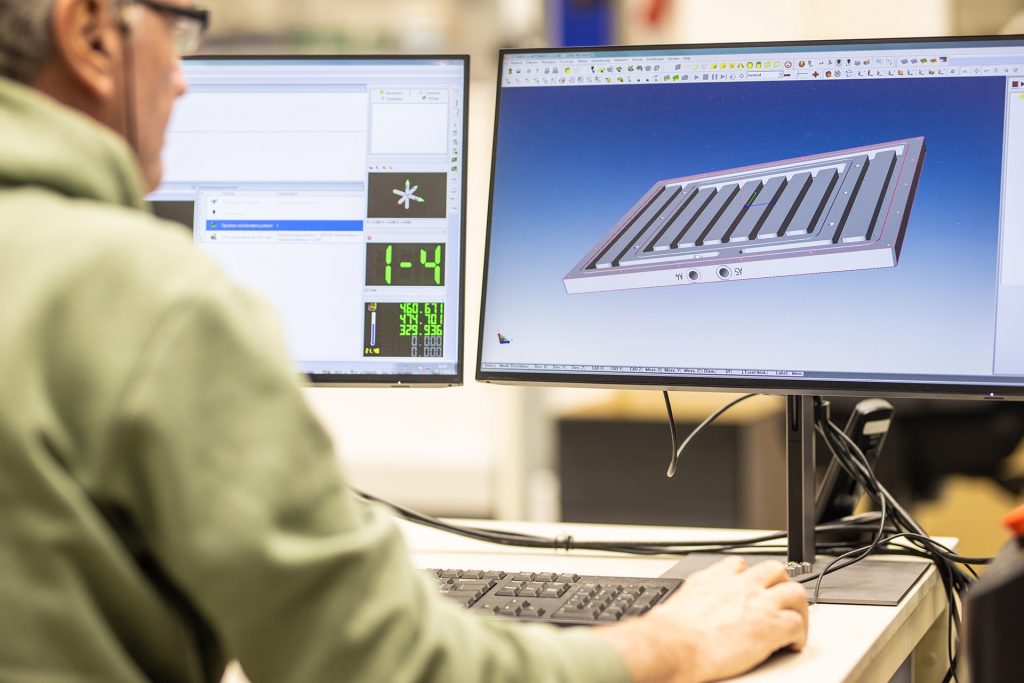
Mechanics
Cutting-edge mechanical engineering expertise and extensive manufacturing know-how
High-tech OEMs active in semiconductor and analytical industries face complicated challenges. They deal, for example with shorter technology lifecycles, high market demands and demanding complexity. Pressure to innovate and to be adaptive to new societal challenges thereby rises. Therefore, it is crucial to select good (co-)development partners to achieve agility and scalability. At NTS, we provide solutions based on our expertise in mechanical engineering, by combining our know-how of design and development with cutting-edge manufacturing knowledge.
From Mechanical Engineering to Manufacturability
Requirements for machine performance and throughputs have increased tremendously. High accelerations, high accuracies, and low vibrational disturbances push the complexity of mechanical designs to the edge. A typical machine contains multiple mechanical subsystems and parts, such as the machine frame, product carriers and handlers, covering, cabinets for electronics, storage units and systems for environmental control.

At NTS, we are uniquely positioned on the crossroads of development and production, combining our extensive manufacturing knowledge with cutting-edge mechanical engineering expertise. We understand that choices made in mechanical design have implications for manufacturing costs, manufacturability, and lead times in the supply chain. For this reason, we involve our in-house manufacturing organizations early in the process – more specifically, in the feasibility and design phase. Why? To make sure that the best manufacturing technology is chosen during the development of the mechanical design itself.
(Co-)Development & Engineering in Practice
Our solutions are highly targeted to the applications and business case of our customers. Our teams are focused completely on achieving the optimal integrated system solution. Mechanical architects, lead engineers and designers work together in multidisciplinary teams and make sure that design trade-offs serve the goals of the customer. Close collaboration with the customers is key. We adapt standard processes or choose to work more agile if it helps reduce lead times or increase alignment with customer teams.
A typical mechanical (co-)development & engineering process can be broken down into five steps, but the way of working is customized to customer needs:
- Establishing the specification: If necessary, we define and sharpen the specs together with our customer and create a high-level design and lay-out;
- Design reviews: Together with the customer, the designs are reviewed based on customer criteria, manufacturability, and serviceability;
- Detailed design of a mechanical system: We involve the NTS manufacturing sites to incorporate feedback on the design. Once the design is finished, we document this in a Technical Product Documentation (TPD);
- Realization: When the system is being realized, a mechanical engineer is involved to help production engineers by solving issues and updating the documentation;
- Verification: All requirements are verified by measurements and tests on prototypes. This is supported by modelling and simulation.
“At NTS, the mechanical design of a machine or tool is always the basis, in which many aspects of the product are being optimized.”
Ruud van der Werf
Senior Mechanical Designer at NTS Eindhoven

We Think Along
A machine frame can be designed as a milled structure, welded tube frame, a sheet metal frame, or a combination. Requirements in the field of stiffness and dynamics behavior, accuracy, cleanliness, and costs (to name a few) also determine the optimal manufacturing technology choice. By involving the right expertise at the right moment, we make sure that, at every step, the desired system is manufacturable and answers customer needs. With our drive to deliver and to achieve the best results, we shorten time- to-market, ensure optimal costs and excellent performance. Long story short, we think along and tailor our expertise to the customer’s challenge. No ‘you ask, we run’-approach here, we think along with your needs and together, we accelerate the future.
Mechanical Engineering to the Next Level: Computational Engineering
Most companies are familiar with FEM computations to assess the robustness of mechanical structures under load. But nowadays there are many more ways designs can be validated, which are needed to achieve high acceleration, high accuracy and low vibration.
At NTS, we cover a wide set of computational approaches to support the development process. As an example, NTS has a proprietary toolset to simulate the machine’s performance.
Download our Whitepaper ‘Frames and enclosures: Dealing with shorter Technology Lifecycles and increasing Requirements’
Within the semicon and analytical market, system requirements and therefore complexity increase in order to achieve higher throughput and accuracy. In parallel, market forces dictate a shorter technology lifecycle and increased pressure on total cost of ownership.In this whitepaper, which is the result of our extensive track record in frames and enclosures, three of NTS’ experts discuss:
- The added value of selecting the right co-engineering and manufacturing partner;
- Their Frames and Enclosure expertise;
- How our processes, capabilities and investments are aimed at reducing time to market, cost of ownership and risks for our global customer base.



